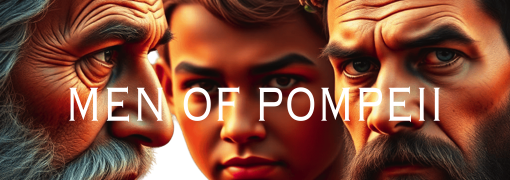Ancient Roman pet culture reveals a fascinating relationship between humans and animals that went beyond mere companionship. In Roman society, animals held significant roles ranging from practical helpers to powerful symbols of status and identity. Pets were not only cherished members of the household but also represented ideals like loyalty, strength, and prestige.
Roman pets included a variety of species, each serving distinct purposes:
- Guard dogs: protecting homes and military camps
- Exotic animals: imported from across the empire as displays of wealth
- Working horses: essential for transportation and agriculture
- Smaller pets like cats, birds, and fish enriching daily life
The rich tapestry of Roman animal symbolism reflects how deeply intertwined these creatures were with social customs, religious beliefs, and public entertainments. This article explores the diverse roles animals played in ancient Rome—from faithful guard dogs to exotic status symbols—shedding light on a vibrant aspect of Roman culture rarely examined in detail.
However, it’s important to note that this intricate relationship between humans and animals did not exist in isolation. The broader societal context, marked by political instability and weak leadership, played a significant role in shaping the dynamics of pet ownership and animal symbolism in ancient Rome.
The Diverse Roles of Animals in Ancient Rome
Animals in ancient Rome had many roles that went beyond just being pets. They were an important part of everyday life, helping with practical tasks, serving social purposes, and representing ideas.
1. Working Animals: Essential for Empire Building
Working animals were crucial to the empire’s success. Horses were vital for both military operations and agriculture, enabling the empire’s growth and stability. Roman dogs served multiple roles as protectors, herders, and hunters, with each breed designed for specific jobs.
2. Beloved Companions: Providing Love and Comfort
Pets held a special significance in Roman homes. Dogs offered companionship and affection, while cats kept homes free of pests. Fish and birds added beauty to living spaces and sometimes became gourmet dishes, showcasing sophisticated preferences.
3. Exotic Pets: Status Symbols of the Elite
Wealthy individuals showcased their power through exotic pets. Lions, elephants, leopards, and other wild animals were brought from far-off regions within the empire by the upper class. These creatures were exhibited publicly or privately as living emblems of status, reinforcing influence and authority.
This variety demonstrates how Romans incorporated animals into their lives in various ways — using them for practical purposes while also forming emotional connections and conveying political messages.
The intricate trade and economy in ancient Rome, which allowed for the import of exotic animals, played a significant role in this integration. Additionally, the reverence for certain animals can be seen reflected in the Roman Pantheon, where gods associated with various aspects of life including nature and animals were worshipped.
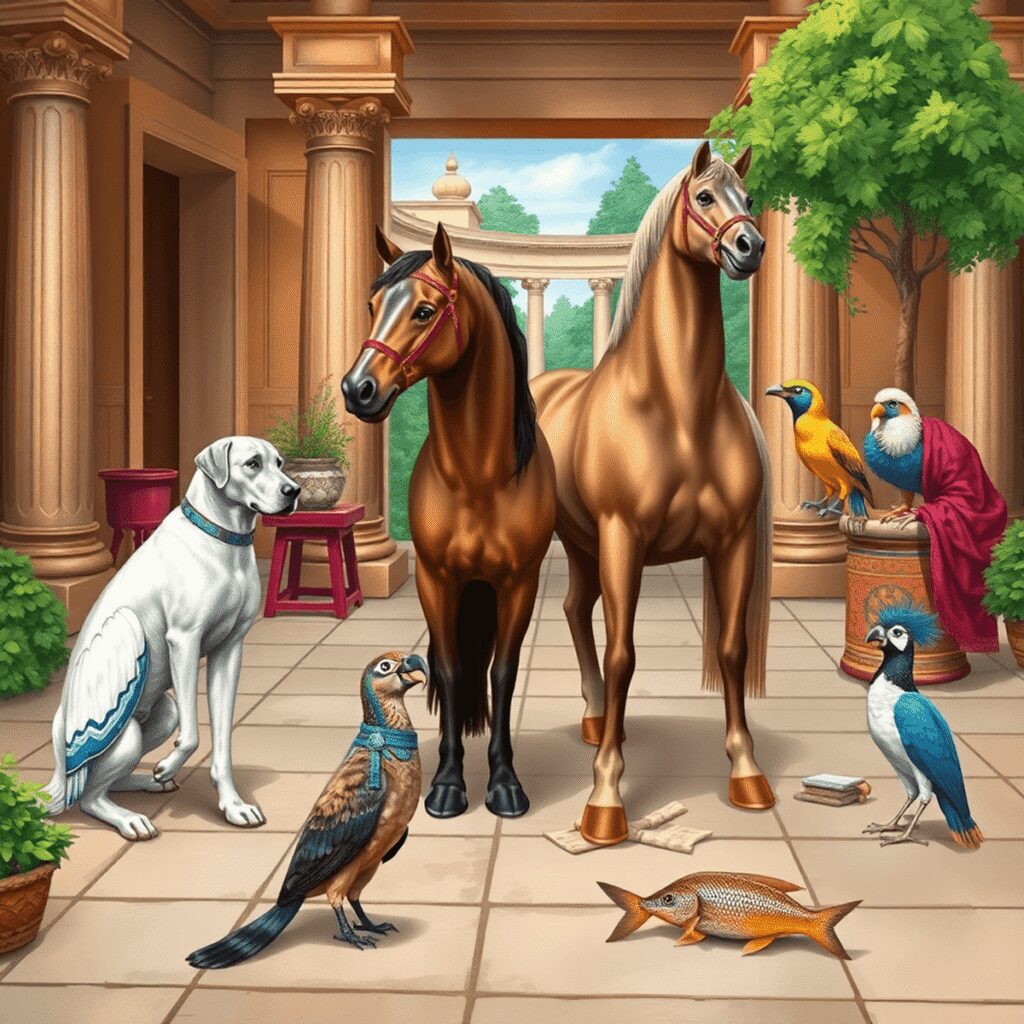
Dogs: Loyal Companions and Versatile Workers
Dogs held a special place in Ancient Roman Pet Culture: From Guard Dogs to Exotic Status Symbols. They were more than animals; they embodied fidelity and loyalty, virtues highly prized in Roman society. Dogs symbolized trustworthiness and protection, qualities that made them indispensable in both public and private life.
Different Breeds and Their Specific Functions
Romans bred dogs for distinct purposes, tailoring each type to specific roles:
- Molossus: A large, powerful breed used primarily as guard dogs. Known for their imposing size and strength, Molossus dogs protected homes, estates, and military camps.
- Mastiff-type dogs: Valued for military uses, these dogs accompanied soldiers, guarding camps and sometimes participating in combat scenarios as part of the Roman military strategy.
- Roman hunting dogs: Agile and skilled, these breeds assisted hunters by tracking game across diverse terrains.
- Canis Melitae (ancient Maltese): These small lapdogs became fashionable companions among the Roman elite. Their delicate nature made them perfect for indoor living and social status display.
Dogs’ Roles in Daily Life
Dogs were not confined to elite households; their functions spanned various aspects of everyday Roman life:
- Guarding property from intruders or wild animals was a common duty.
- Herding livestock helped farmers manage sheep, goats, and cattle efficiently.
- Assisting in hunts provided both sport and sustenance.
In Pompeii, archaeological evidence reveals that children often shared close bonds with dogs. These pets offered warmth during cold seasons—a practical comfort alongside emotional companionship.
Dogs as Family Companions and Status Symbols
Romans treated their dogs with care that reflected affection as well as social standing. Naming conventions were important; pets had distinctive names that underscored their unique identities within the family. Accessories like collars were not merely functional but also ornamental.
Pliny the Elder recommended gold collars to discourage excessive barking, indicating attention to both pet behavior and luxury.
The presence of lapdogs such as the Canis Melitae signaled wealth and refinement. These small companions appeared frequently in household art and literature, symbolizing not only loyalty but also fashion consciousness among Rome’s affluent classes.
Pets provided warmth physically and emotionally. The bond between owner and dog was nurtured through daily interactions that included feeding, grooming, and play—practices documented by historians and preserved in frescoes from Pompeii.
This multifaceted relationship with dogs highlights their significance beyond mere utility. They stood as symbols of fidelity while fulfilling vital roles from guarding estates to offering companionship to children—an integral thread woven into the fabric of Roman life.
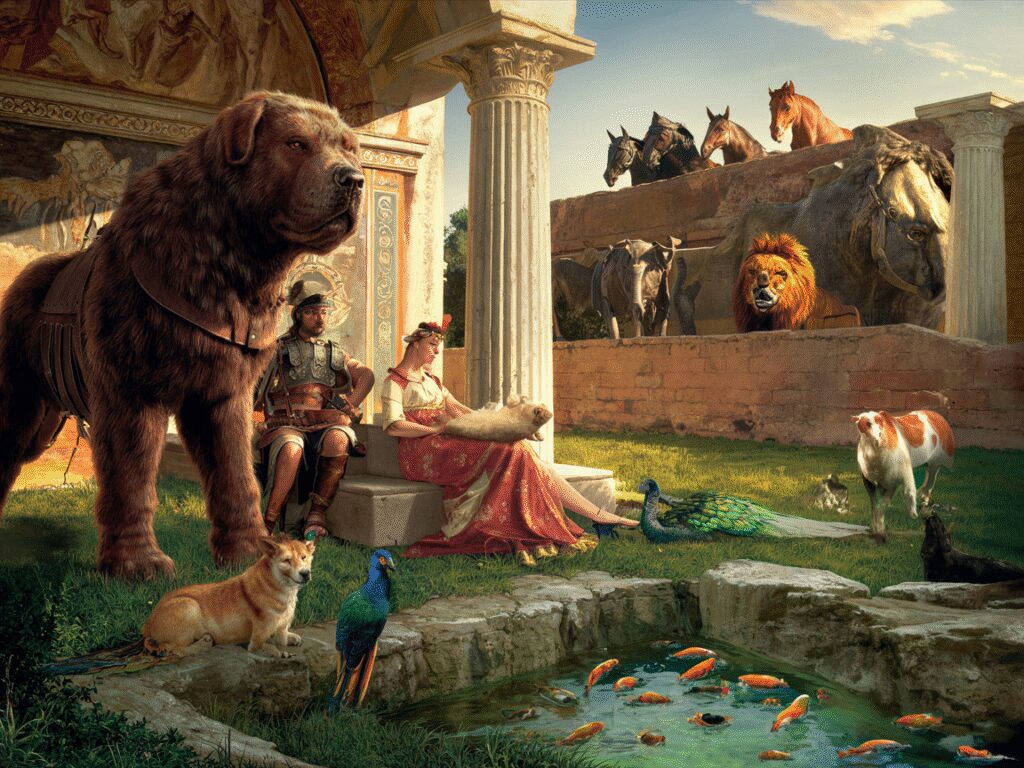
Exotic Animals: Symbols of Power and Prestige
The Romans were deeply fascinated by exotic pets Rome imported from the far corners of their vast empire. Animals such as elephants, lions, leopards, ostriches, and even parrots were brought into the city not only out of curiosity but also as displays of imperial power and influence. These creatures represented more than mere oddities; they symbolized Rome’s dominance over nature itself.
Exotic Animals in the Colosseum
The Colosseum animals played a significant role in public spectacles. Wild beasts were showcased in gladiatorial games and venationes (animal hunts), transforming the arena into a stage for both entertainment and political messaging. The presence of lions, leopards, and other fierce creatures demonstrated Rome’s control over distant lands where these animals came from.
- Lions symbolized courage and strength.
- Leopards represented swiftness and ferocity.
- Elephants were often used to intimidate enemies during battles and were paraded as trophies of conquest.
These events attracted thousands, reinforcing the emperor’s power by showcasing his capacity to import and control dangerous species. The logistics involved in transporting such animals—sometimes across continents—highlighted Roman engineering prowess and administrative organization. This mastery over nature was not just a display of power but also served as a form of propaganda, similar to how coins were used as powerful tools by emperors to convey their authority and legitimacy.
Exotic Animals as Status Symbols Among the Elite
Owning exotic pets was a privilege reserved for the wealthy elite. These animals went beyond practical purposes to become fashion statements and symbols of prestige within Roman high society.
- Elephants stood out as the ultimate emblem of imperial power. Their massive size and unfamiliar appearance made them awe-inspiring creatures, signifying strength on a scale beyond mere human capability.
- Elite Romans kept smaller exotic animals such as parrots or peacocks in their private gardens or villas. These pets served as conversation pieces during banquets and social gatherings.
- Displaying exotic animals was also a demonstration of one’s connections within the empire’s trade networks, reinforcing social hierarchy through visible wealth.
Pliny the Elder wrote about some aristocrats adorning their homes with exotic beasts, blending practical luxury with symbolic grandeur. Owning an elephant or a lion was not just about possession but about projecting an image aligned with Rome’s expanding imperial identity.
Imported Species Rome Valued
The variety of imported species reflected Rome’s global reach:
- Elephants came mainly from North Africa or India.
- Lions were captured in North Africa or parts of Asia Minor.
- Leopards originated from regions around the eastern Mediterranean.
- Birds like ostriches and parrots came from Africa or India.
Each species carried associations tied to its origin: mystery, danger, rarity—all qualities that amplified their owners’ status. Exotic pets Rome embraced were markers of civilization conquering wilderness, civilization flaunting its ability to tame nature from all corners of the known world.
This complex relationship between humans and exotic animals in ancient Rome reveals how these creatures embodied power dynamics beyond simple companionship or utility. They became living trophies—symbols woven directly into the fabric of Roman social and political life.
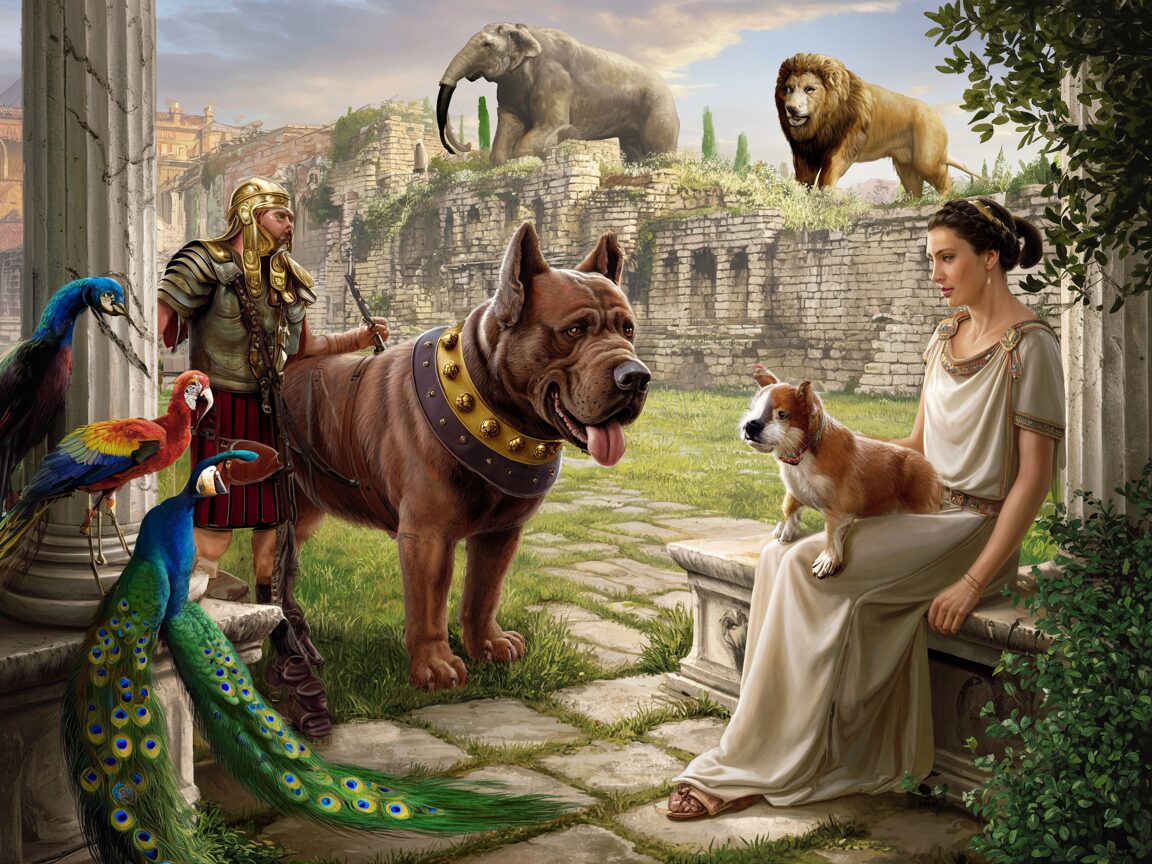
Horses: Practicality Meets Pampering
Horses played an important role in Ancient Roman Pet Culture: From Guard Dogs to Exotic Status Symbols. They were more than just pets; they were crucial for the military and farming activities of the empire.
Military Importance
Roman horses were essential for cavalry units, which had strategic roles in battles. These horses needed to be strong, have good endurance, and be agile enough to carry soldiers into combat and perform complex movements in different types of landscapes. The quality of the horses often determined whether the Roman legions would win or lose. The breeds chosen for war were sturdy and well-trained, able to react quickly in chaotic situations. Some of the most sought-after breeds during this time were Ferghana horses, known for their exceptional qualities.
Agricultural Use
In addition to their role in warfare, horses also played a significant part in farming. They were used to pull plows and carts, supporting the large agricultural economy that fed Rome’s growing population. Horses had greater stamina than oxen, allowing farmers to work larger fields more efficiently.
Emperor Caligula’s Incitatus: A Horse Fit for a King
The story of Emperor Caligula’s horse Incitatus stands out as a striking example of the elevated status some horses achieved. Incitatus was not just a working animal but also an object of imperial affection and extravagance.
Lavish Treatment
Caligula reportedly provided Incitatus with a marble stall, an ivory manger, purple blankets, and even a collar adorned with precious stones. Such indulgence was unusual for any animal, highlighting how equine companions could transcend their practical roles to become symbols of prestige.
Political Symbolism
Historical accounts suggest Caligula intended to appoint Incitatus as consul, Rome’s highest office. Whether this was serious or satirical remains debated by scholars, but the gesture underscored how horses like Incitatus became intertwined with political theater and social commentary.
Reflection on Roman Values
The pampering of Incitatus reflects how some Romans viewed horses not just as tools but as extensions of personal power or eccentricity. This contrasts with the more utilitarian perspective on Roman horses generally used by soldiers or farmers.
Roman horses thus occupied dual roles—essential workers supporting empire-building efforts alongside creatures capable of inspiring admiration and fascination within elite circles. The legacy of horses like Incitatus continues to captivate imaginations about the blend of utility and luxury in ancient Roman life.
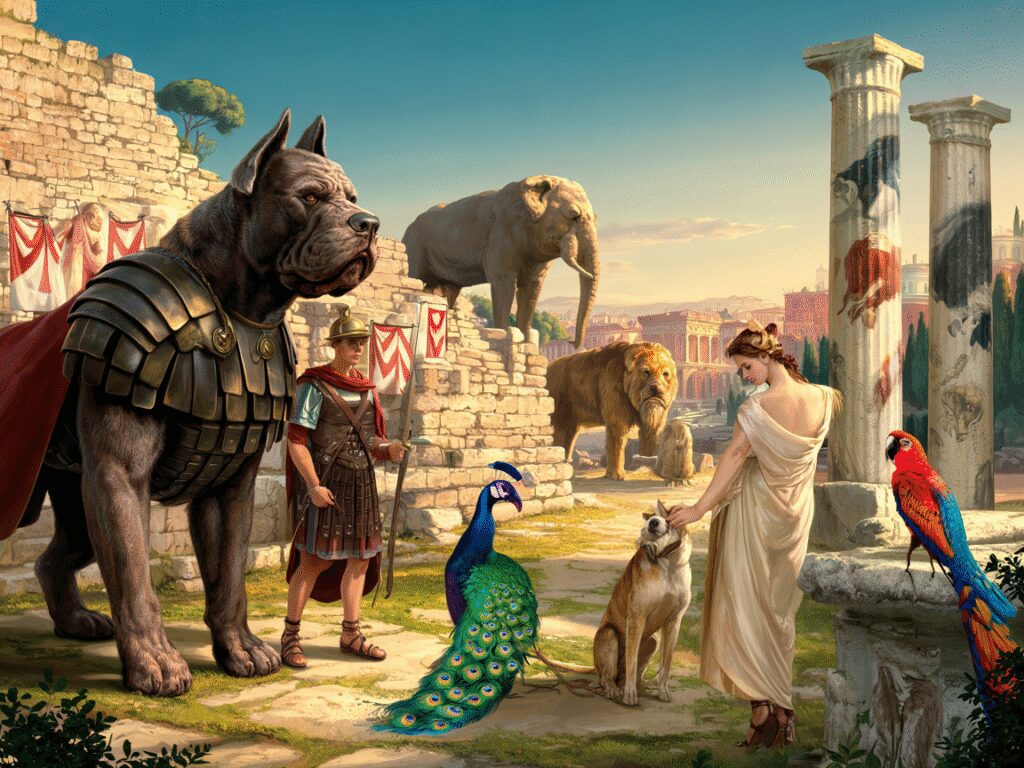
Cats, Fish, Birds: The Smaller Pets of Ancient Rome
Smaller pets played a significant role in the households of ancient Rome, serving both practical purposes and providing companionship. Here’s a closer look at the smaller pets that were popular during that time.
Cats: Masters of Rodent Control and Ornamental Companions
Cats in Rome served a dual purpose within households. Primarily, they were valued for their natural skill in rodent control, helping to protect grain stores and kitchens from pests.
Although practical, cats also earned a place as ornamental pets admired for their grace and independence. Evidence from Roman frescoes and mosaics reveals domestic cats comfortably integrated into family life, sometimes even depicted alongside children or reclining on furniture.
Fish: Decorative Delights and Culinary Treats
Fish enjoyed popularity both as decorative pets and culinary delicacies. Romans maintained fish ponds or small tanks within homes or gardens, showcasing species prized for their colors and shapes. Fish like carp or mullet were not only admired visually but also featured in banquets, highlighting a blend of aesthetic appreciation and gastronomy.
Birds: Melodious Companions with Symbolic Significance
Birds held a special charm as companions. Songbirds such as nightingales and thrushes were kept for their melodious voices, while exotic parrots symbolized wealth and luxury among the elite. Birds like doves and pigeons had practical uses too, serving as messengers or symbols of peace. Their cages often displayed intricate craftsmanship, reflecting the owner’s status.
Key points about smaller pets in Rome:
- Cats primarily controlled rodents but also became ornamental household companions
- Fish appreciated for their beauty and consumed as delicacies
- Birds valued both for song and exotic appearance; some used for communication
This variety of smaller pets illustrates how Roman families balanced utility with aesthetics, integrating animals into daily life beyond the grander spectacles seen with larger species. Interestingly, recent research has even explored the potential psychological benefits associated with pet ownership, shedding light on the deeper bond between humans and their smaller companions in ancient Rome.

Animals in Roman Art, Religion, Entertainment, and Public Spectacles
Animals held a prominent place in Roman animal symbolism, deeply embedded in the visual and cultural fabric of ancient Rome. Their frequent depiction across various art forms reflected not only aesthetic appreciation but also conveyed significant cultural values.
1. Animal Imagery in Rome’s Art and Currency
Mosaics found throughout Roman homes often featured detailed representations of animals — from fierce lions to graceful birds — symbolizing strength, protection, or domestic harmony. Coins commonly bore images of animals like eagles or wolves, reinforcing messages of power, divine favor, and imperial authority. Such depictions were more than decoration; they communicated identity and social ideals to the public. This is evident in the masterpieces of Roman art, which reflect not only the aesthetic values of its time but also the social, political, and cultural dynamics that shaped the Roman world.
2. Religious Significance: The She-Wolf and Rome’s Founding Myth
One of the most iconic examples of animal imagery tied to religion is the she-wolf that nursed Romulus and Remus. This legendary scene embodies Rome’s origins and symbolizes nurturing strength and survival. The she-wolf transcended myth to become a potent emblem of the city itself — an eternal guardian figure woven into Roman belief systems and public consciousness. Furthermore, rituals and sacrifices played a significant role in how Romans connected with their gods, often involving animals as symbols or offerings.
3. Animal Fights as Popular Entertainment
Spectacles involving animals played a vital role in Roman leisure activities. The Colosseum was not only a venue for gladiatorial combat but also a stage for dramatic Colosseum spectacles animals encounters. Wild beasts such as lions, bears, and leopards were pitted against one another or against human fighters in brutal contests resembling modern bullfighting or dog fighting traditions. These events showcased Rome’s dominion over nature and served as a reminder of imperial strength.
This multifaceted presence of animals—from sacred symbols to thrilling entertainment—illustrates how deeply integrated they were within Ancient Roman Pet Culture: From Guard Dogs to Exotic Status Symbols. The influence of Roman society on Western civilization is evident even today in various aspects including our legal systems which have been significantly shaped by the enduring legacy of Roman law.
Conclusion
In ancient Rome, animals were more than just pets or tools; they played a crucial role in the empire’s social structure and cultural identity. The legacy of pets in ancient Rome shows us a society where animals symbolized loyalty, power, and prestige, while also serving practical purposes in everyday life. From loyal guard dogs protecting homes and soldiers to exotic animals representing imperial dominance, each creature had its own significance that reflected broader societal values.
Roman pets were symbols of status, love, and purpose—they appeared in art, religion, entertainment, and public events. This close connection demonstrates how pets in ancient Rome shaped cultural views on loyalty, strength, and wealth.
The story of animals in Rome goes beyond ownership; it encompasses the relationships that defined human experiences within the empire’s complex social hierarchy. Ancient Roman Pet Culture: From Guard Dogs to Exotic Status Symbols serves as a powerful reminder of how animals impacted all aspects of Roman society.
FAQs (Frequently Asked Questions)
What roles did dogs play in ancient Roman society?
Dogs in ancient Rome served as loyal companions, versatile workers, and status symbols. Breeds like the Molossus were used as guard dogs and military aids, while lapdogs such as Canis Melitae were cherished by the elite as companions. Dogs also guarded property, herded livestock, and assisted in hunting, symbolizing fidelity and loyalty in Roman culture.
How were exotic animals perceived and utilized in ancient Rome?
Exotic animals like elephants, lions, and leopards were imported from across the Roman Empire and served as symbols of power and prestige. They were featured prominently in Colosseum spectacles for entertainment and to demonstrate imperial strength. Among the elite, owning such exotic pets was a clear status symbol reflecting wealth and influence.
What significance did horses have in ancient Roman culture?
Horses were essential to Roman military campaigns and agriculture, highlighting their practical importance. Additionally, horses received pampering that elevated their status beyond mere work animals, exemplified by Emperor Caligula’s famous horse Incitatus, who was treated with royal honors.
Why were cats, fish, and birds popular pets in ancient Rome?
Cats were primarily valued for controlling rodents but also kept as ornamental pets within Roman households. Fish and birds were popular both for decorative purposes and as delicacies. These smaller pets contributed to daily life by combining practicality with aesthetic appeal.
How did animals feature in Roman art, religion, and public spectacles?
Animals held extensive representation in Roman mosaics, coins, literature, and religious symbolism—such as the she-wolf nurturing Romulus and Remus symbolizing Rome’s founding myth. Public spectacles often included animal fights resembling modern bullfighting or dog fighting traditions at arenas like the Colosseum.
What is the cultural legacy of ancient Roman pet culture today?
Ancient Roman pet culture deeply integrated animals into social fabric and cultural identity through practical roles and symbolic meanings. This legacy influences modern perceptions of pet keeping, animal symbolism in art and literature, and recognition of animals’ multifaceted roles within society.

